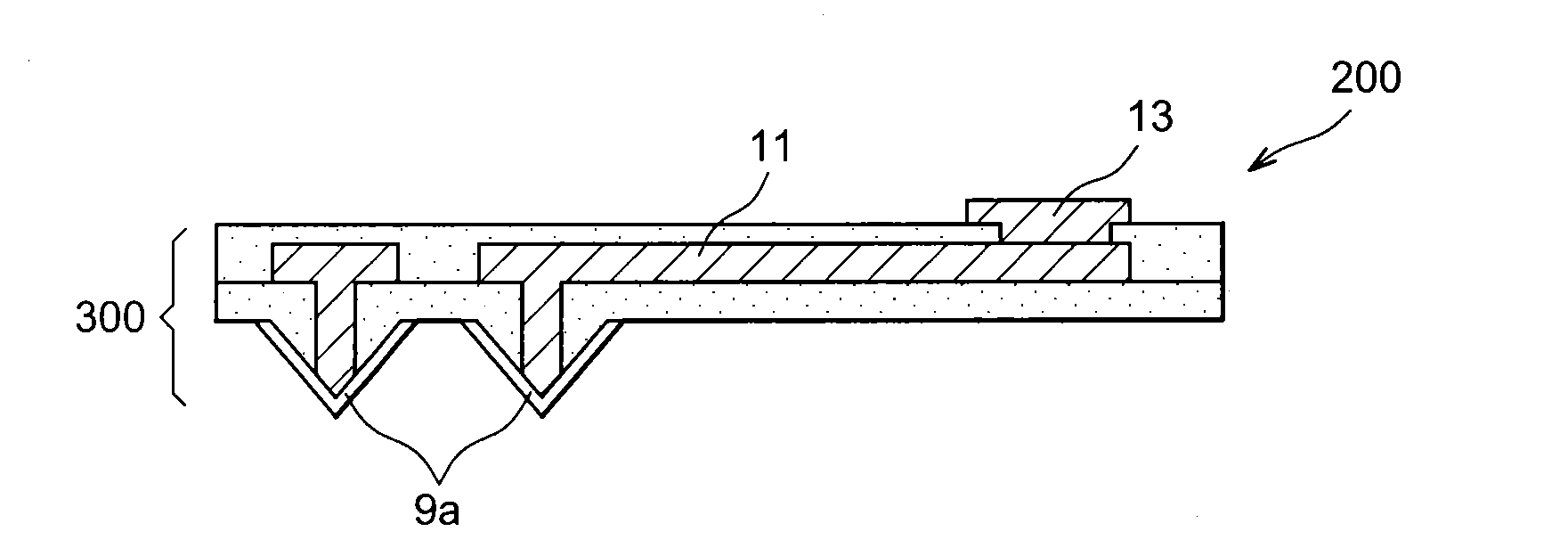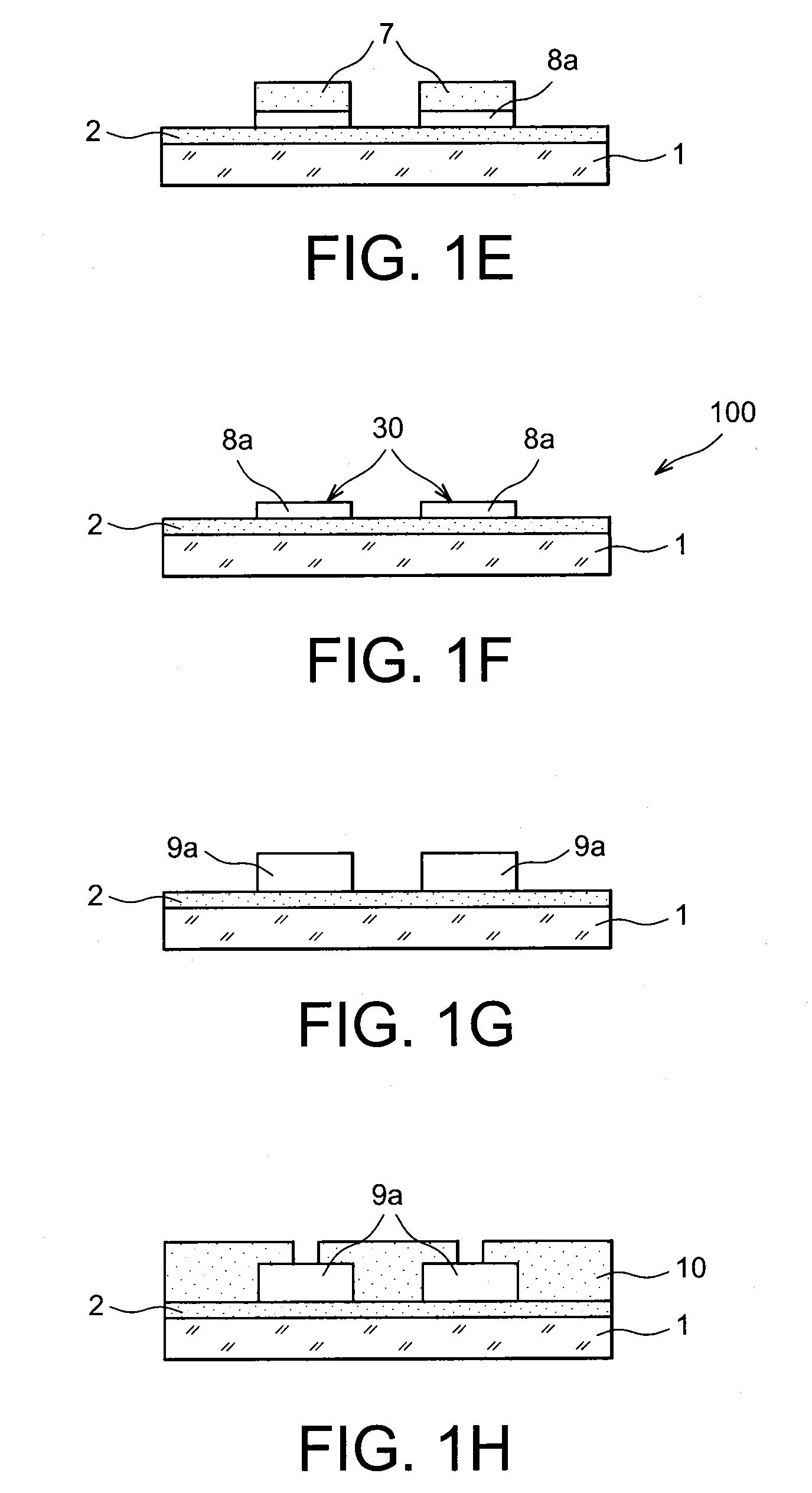Method for manufacturing a flexible intraocular retinal implant having doped diamond electrodes
a technology of diamond electrodes and flexible electrodes, which is applied in the field of flexible retinal implants, can solve the problems of brittle electrodes, damage to retinal tissues, and certain implants, and achieve the effects of improving the stability of the implant, improving the implant quality, and improving the implant quality
- Summary
- Abstract
- Description
- Claims
- Application Information
AI Technical Summary
Benefits of technology
Problems solved by technology
Method used
Image
Examples
Embodiment Construction
[0017]The subject matter of the invention is thus a method for manufacturing an intraocular retinal implant, intended to stimulate cells of the retina by sending electrical impulses to produce an artificial vision, said implant including a flexible plate made of a biocompatible and electrically insulating material, which is provided, on one of the face thereof, with a plurality of electrodes made of doped diamond spaced apart from each other and connected to interconnection lines intended to lead an electric current to the electrodes so that they can transmit electrical impulses to said cells of the retina, said method including the following successive steps:
[0018]providing a mould capable of supporting the growth of a layer of doped diamond, said mould comprising, on one of the face thereof, a set of elements which are all depressed or all projecting with respect to the surface of said face, and which constitute a pattern cavity for the electrodes of the implant which it is desire...
PUM
| Property | Measurement | Unit |
|---|---|---|
| size | aaaaa | aaaaa |
| size | aaaaa | aaaaa |
| temperature | aaaaa | aaaaa |
Abstract
Description
Claims
Application Information
 Login to View More
Login to View More - R&D
- Intellectual Property
- Life Sciences
- Materials
- Tech Scout
- Unparalleled Data Quality
- Higher Quality Content
- 60% Fewer Hallucinations
Browse by: Latest US Patents, China's latest patents, Technical Efficacy Thesaurus, Application Domain, Technology Topic, Popular Technical Reports.
© 2025 PatSnap. All rights reserved.Legal|Privacy policy|Modern Slavery Act Transparency Statement|Sitemap|About US| Contact US: help@patsnap.com



